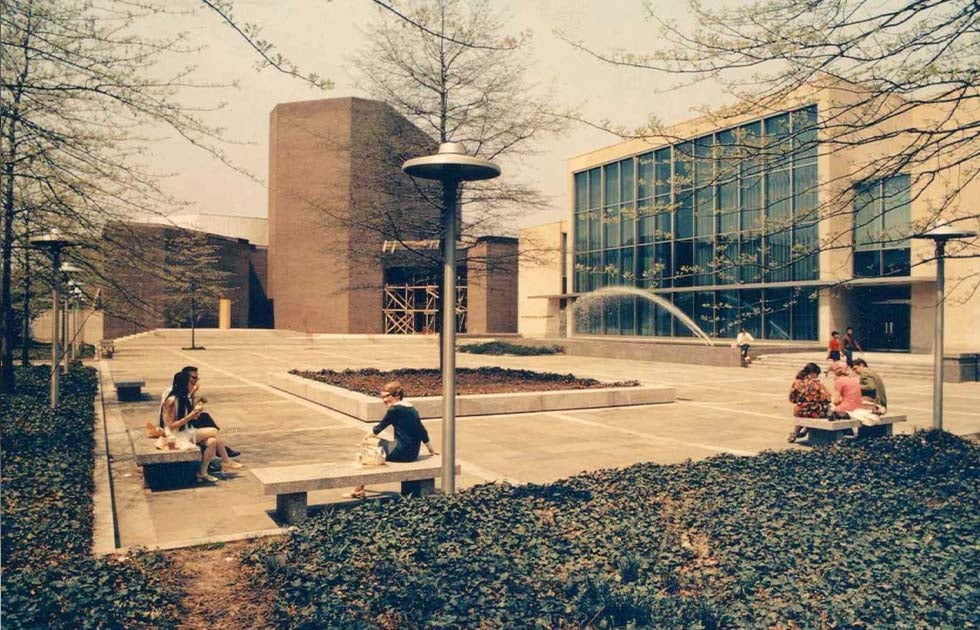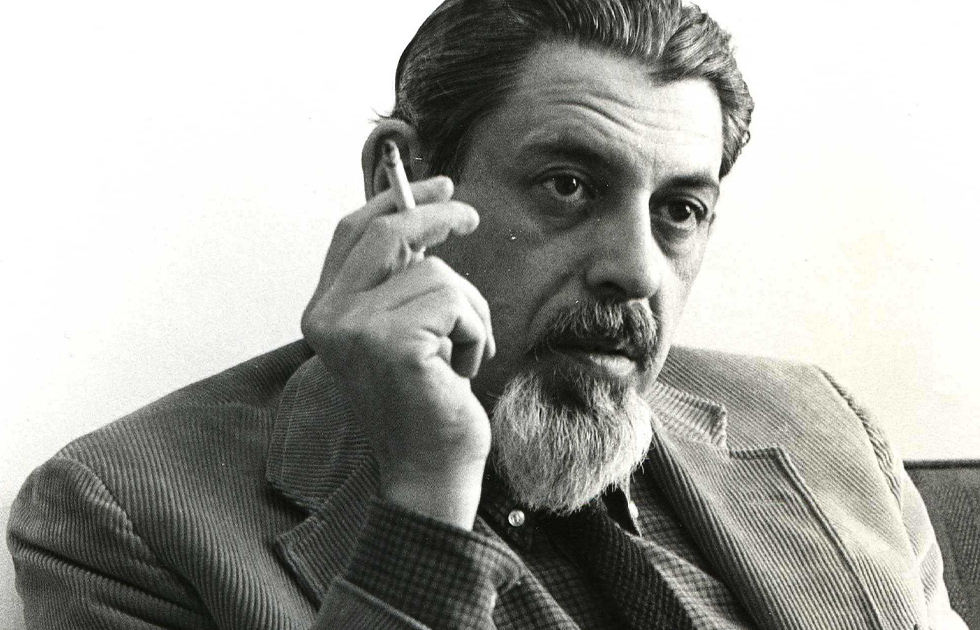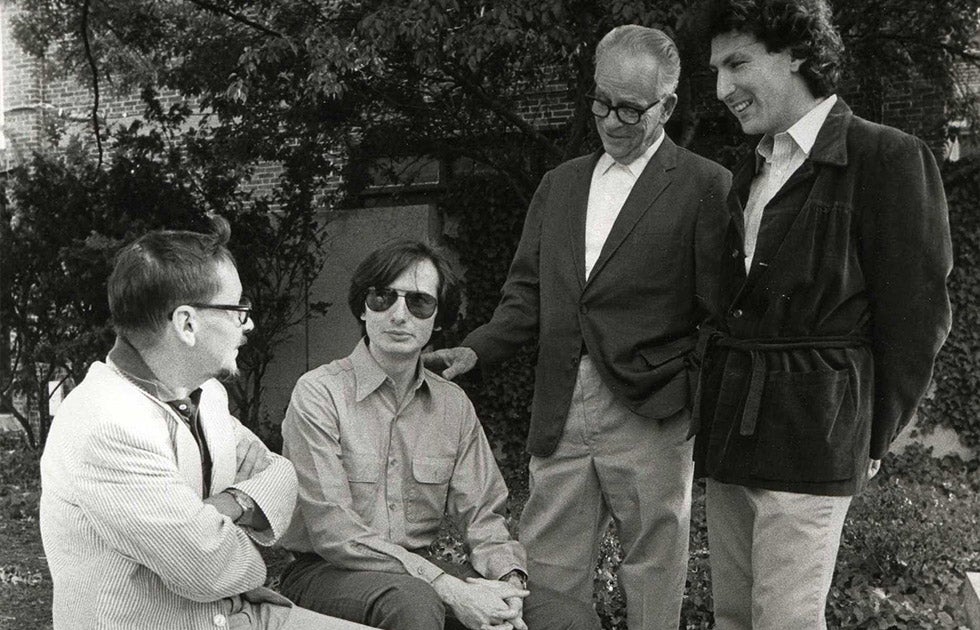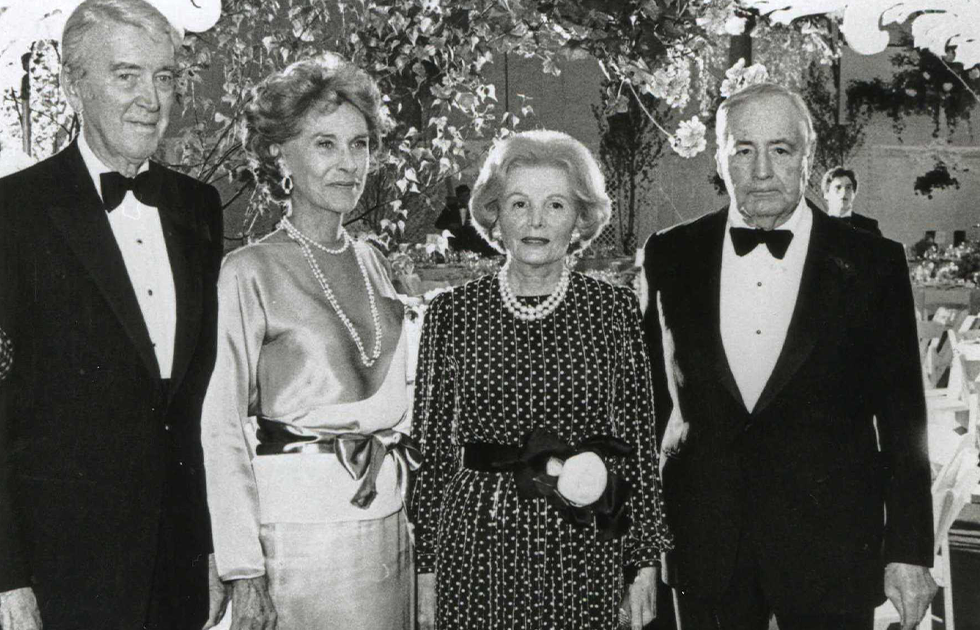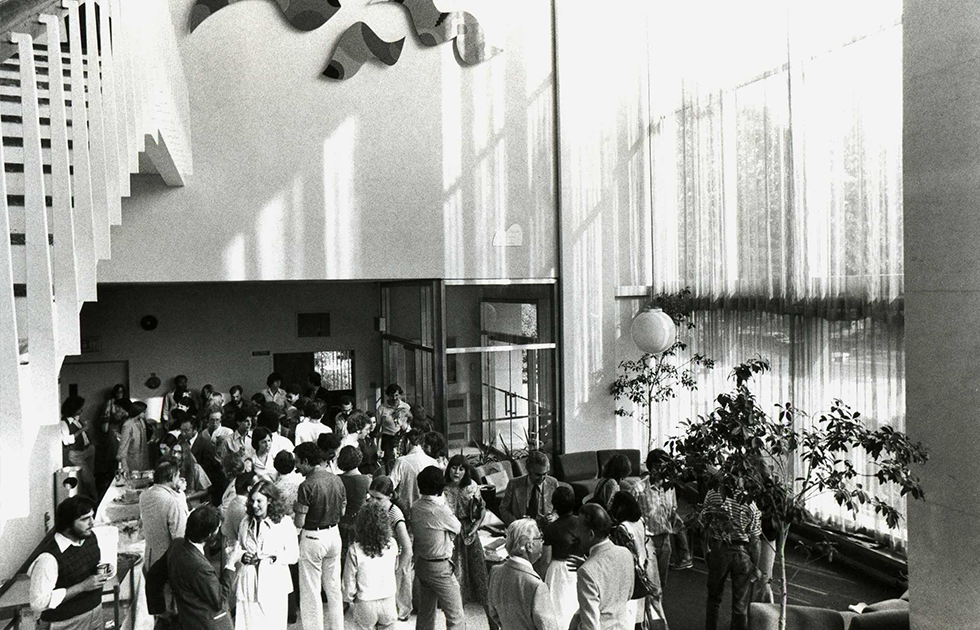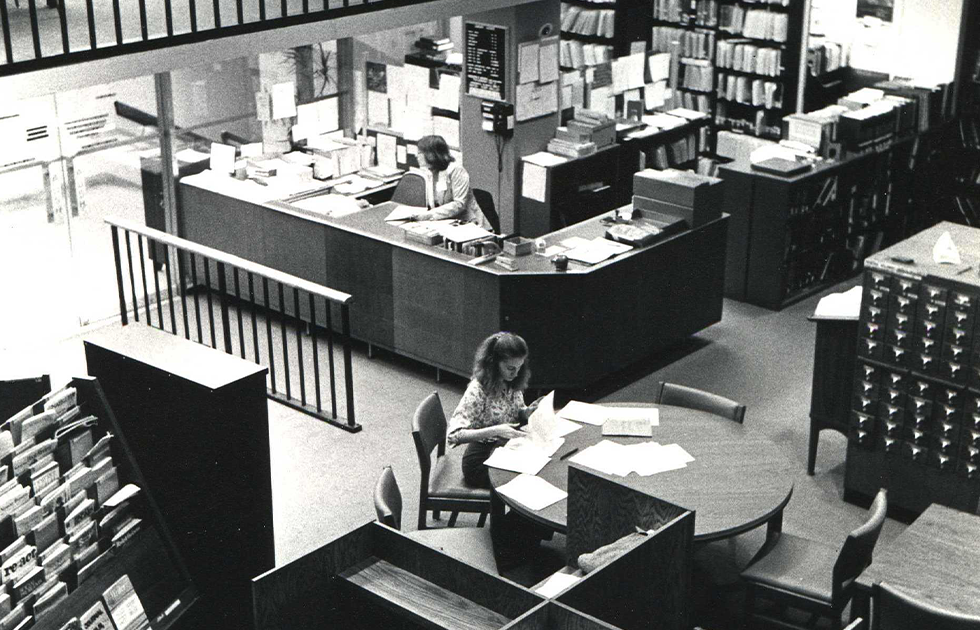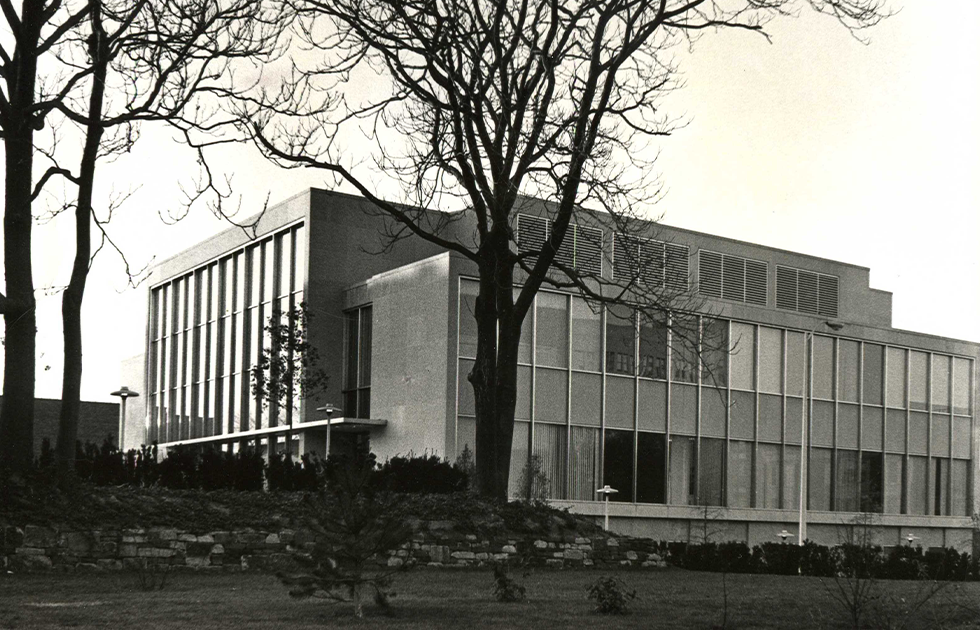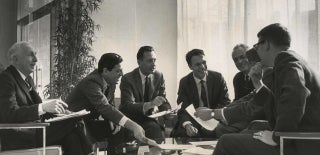
The Gerbner Years (1964-1989)
Under Annenberg's longest-serving dean, the School took on a scholarly-focus and launched both its Ph.D. program and the undergraduate Communication major.
Upon his arrival in fall 1964, Dean George Gerbner (1964-1989) began to transform the graduate program, giving it the more scholarly and research orientation that characterizes it today.
Gerbner, who held a Ph.D. in Communications & Education from the University of Southern California, believed that the young field of Communications was not simply the crossroads of anthropology, sociology, and psychology, but should itself be considered a fundamental discipline. “It’s an organization of knowledge that has something to say about every human and social situation,” he reflected in 1987.
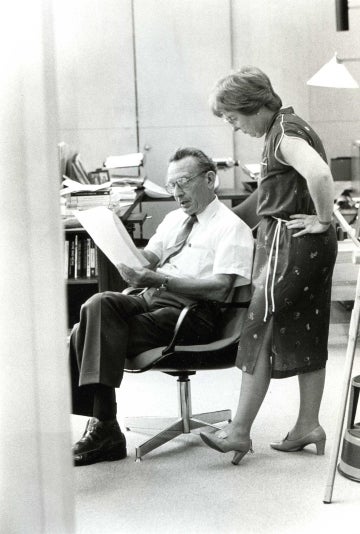
Under his leadership, the Annenberg School was among the first Communications programs in the country to move away from the traditional focus on a specific medium of communication (e.g., speech, print, radio, television, film) or professional training (e.g., communication science and disorders, journalism) towards an emphasis on theory and research regarding the social and institutional aspects of communication.
During this period, the Annenberg School was instrumental in the development of an integrated discipline of Communication, including involvement in the International Communication Association (emerging out of the National Society for the Study of Communication in 1969) and the Journal of Communication, which was housed at the Annenberg School and edited by Gerbner from 1974 until 1991.
Under Gerbner’s oversight, the faculty grew to between 10 and 12 members. Early faculty hires included Sol Worth, Charles Wright, Percy Tannenbaum, and Larry Gross — all prominent scholars in the field.
Other faculty, many of them still a part of the school today, hired during this period include Robert C. Hornik, Klaus Krippendorff, Carolyn Marvin, Oscar Gandy, Paul Messaris and Joseph Turrow.
In 1968, the Annenberg School introduced a Ph.D. program in Communications. The three core areas of study at the time were “Communication Codes and Modes,” “Communications Behavior,” and “Communications Institutions.”
In 1971, a gift from Walter and Leonore Annenberg established the Annenberg Center for the Performing Arts, which was run for several years under the umbrella of the Annenberg School before becoming independent.
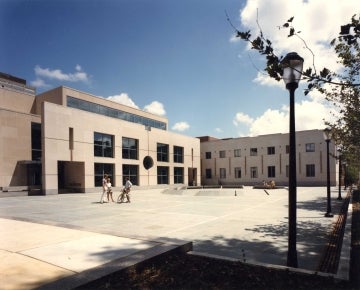
An experimental program teaching Communications to Penn undergraduates began in 1975 under the direction of Professor Sol Worth, and was taken over by Professor Larry Gross upon Worth’s death in 1977. In 1979, Communications was made an official undergraduate major at the University of Pennsylvania through its College of Arts and Sciences, with faculty from the Annenberg School designing, teaching, and administering all aspects of the major’s curricular and co-curricular structure. This structure remains in place today. Initially, enrollment was limited to 15 majors per year, though it gradually expanded.
In 1987, the first major addition to the building was completed, designed by architect Romaldo Giurgola.
The original Annenberg building opened up onto Locust Walk, with no entrance at all onto Walnut Street, which for much of the university’s history was the northern border of campus. In the 1980s, Walter Annenberg noted that Penn was expanding dramatically to the north, and so Giurgola’s design took into account that expansion, creating a wing for faculty and administrative offices that also provided a Walnut Street entrance and gave the building its current Walnut Street address.
Back: The Seldes Years Next: The Jamieson Years
The Gerbner Years
Photos from the Annenberg School from 1964 until 1989.

